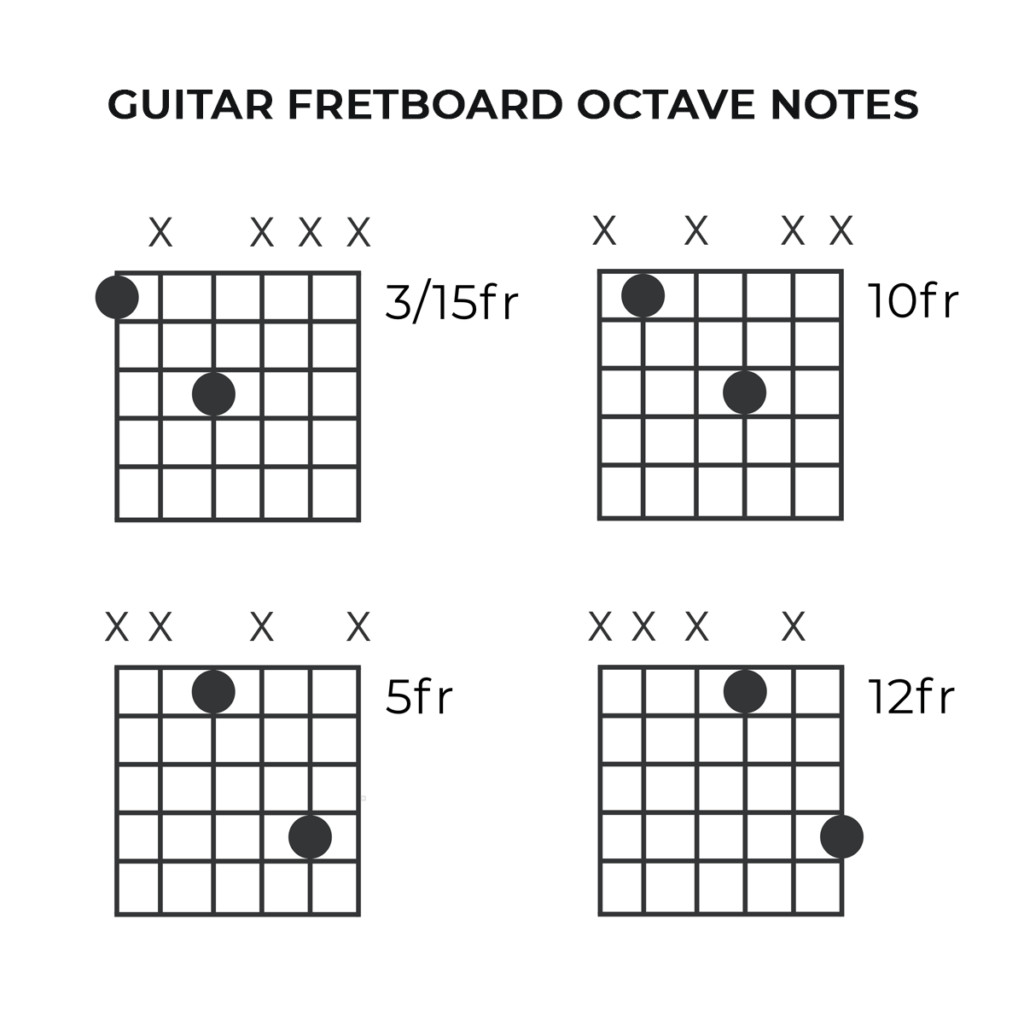Understanding Guitar Notes And Strings is the bedrock of your musical journey. Whether you dream of strumming your favorite songs, crafting soulful melodies, or shredding electrifying solos, knowing the notes on your guitar strings is the essential first step. This guide will illuminate the world of guitar string notes, focusing on standard tuning, fretboard navigation, and how this knowledge unlocks chords, scales, and ultimately, your musical potential.
Understanding Guitar String Notes in Standard Tuning
A standard guitar typically has six strings, each meticulously tuned to produce a specific pitch when played openly—that is, without pressing down on any frets. This standard tuning, often referred to as EADGBE, is the most common tuning for guitarists and provides a versatile foundation for playing various musical styles. From the thickest string to the thinnest, the open string notes are:
- 6th String (Lowest E): E
- 5th String (A): A
- 4th String (D): D
- 3rd String (G): G
- 2nd String (B): B
- 1st String (Highest E): E
When you hold your guitar in a playing position, the thickest string, the Low E (6th string), is nearest to your face, while the thinnest, High E (1st string), is closest to the floor. Tuning usually begins with the Low E string, setting a reference point for tuning the rest. A helpful mnemonic to remember these string names from lowest to highest is: “Every Adult Dog Growls, Bites, Eats.”
 Guitar Strings Names
Guitar Strings Names
The Musical Alphabet and Octaves on the Guitar
To truly grasp guitar notes, it’s crucial to understand the musical alphabet. This alphabet consists of seven natural notes: A, B, C, D, E, F, and G. Beyond these natural notes, we have sharps (#) and flats (♭), which are semitones (half-steps) between the natural notes, except between B and C, and E and F, where there is only a semitone. Think of sharps and flats as the “in-between” notes, expanding the musical palette.
Now, consider the concept of octaves. You might notice that the open 6th and 1st strings are both E notes. These are the same note name but sound different due to their pitch being an octave apart. An octave represents the interval between one musical note and another with double its frequency. On the guitar fretboard, you can find the same note in different octaves at various positions. For example, the G note can be played on the open 3rd string, or an octave higher at the 12th fret of the same string. This principle of octaves is fundamental to navigating the fretboard effectively and finding the same notes in multiple locations.
 Guitar Octave Fretboard Diagram
Guitar Octave Fretboard Diagram
Finding Guitar Notes Across the Fretboard
Initially, locating specific notes on the guitar fretboard might seem daunting, but with focused practice, it becomes intuitive. Here’s a step-by-step approach to help you navigate the fretboard and find those elusive notes:
-
Open String Familiarity: Begin by playing each open string individually and consciously listening to its pitch (E, A, D, G, B, E). This exercise helps you internalize the sound of each string and associate it with its name. Ensure your guitar is accurately tuned for this step to be effective.
-
Fretboard Markers as Guides: Observe the small dot inlays on your fretboard and the side of the guitar neck. These markers are typically placed at the 3rd, 5th, 7th, 9th, and 12th frets (and beyond). They serve as visual landmarks, making it easier to locate frets, notes, and chord positions quickly.
-
Horizontal and Vertical Note Exploration: Start by finding the same note on different strings. For instance, the E note you hear on the open high E-string can also be found on the 5th fret of the B string (2nd string) and the 9th fret of the G string (3rd string). Experiment with finding other notes in different positions horizontally across strings and vertically up the fretboard.
-
The 12th Fret Octave Reference: The 12th fret is a crucial reference point because it marks the octave. The note at the 12th fret of any string will be the same note name as the open string, but an octave higher. For example, the open Low E string and the 12th fret on the Low E string both produce an E note, just in different octaves. Use the 12th fret to orient yourself and understand the repeating pattern of notes on the fretboard.
Consistent practice with these steps will transform fretboard navigation from a challenge into second nature.
Applying Guitar String Notes to Play Basic Chords
Understanding guitar string notes is not just theoretical knowledge; it’s the key to unlocking practical guitar skills, starting with chords. A guitar chord is created by playing multiple notes simultaneously across different strings. To form a chord, you need to press down specific strings at particular frets, effectively changing the vibrating length of the strings and thus the notes produced.
Chord diagrams are your visual guide to playing chords. These diagrams illustrate which strings to press down, which frets to use, and often which strings to strum or avoid. For example, the D major chord uses only the four thinnest strings and requires a specific finger placement on the fretboard.
Beginner-friendly chords like G major, C major, and D major are excellent starting points. Learning these basic open chords will allow you to play countless songs and build a solid foundation in chord vocabulary.
Mastering Scales to Unlock Fretboard Fluency
Once you’re comfortable with chords, venturing into guitar scales is the next exciting step. A guitar scale is a sequence of notes played in ascending or descending order, following a specific pattern of intervals (distances between notes). Each scale is named after its root note, the starting note of the scale.
Understanding scales provides you with a deeper comprehension of the fretboard, enabling you to improvise melodies, write your own music, and play guitar solos with greater freedom and musicality. The sound of a scale is determined by the intervals between its notes. For example, a major scale pattern consists of seven notes with a characteristic pattern of whole and half steps. Common scales for guitarists include major scales, minor scales, and pentatonic scales.
The C major scale, for instance, comprises the notes C, D, E, F, G, A, and B. By learning the patterns of these scales and locating these notes across the fretboard, you can play them in various positions and octaves, expanding your melodic and improvisational skills.
 Guitarist Improvising Solo
Guitarist Improvising Solo
Tuning Your Guitar: Ensuring Accurate Pitch
Knowing your guitar string notes is intrinsically linked to tuning your guitar accurately. Correct tuning is paramount for a pleasant playing experience and for your guitar to sound its best. Playing an out-of-tune guitar can be jarring and hinder your musical progress.
While experienced guitarists may develop the ability to tune by ear using a reference pitch, the most reliable method, especially for beginners, is to use a tuner. Modern tuner apps are incredibly convenient and accurate. These apps use your device’s microphone to detect the pitch of each string and provide visual feedback, indicating whether the string is too flat (pitch too low) or too sharp (pitch too high). You then adjust the tuning pegs on your guitar to tighten or loosen the string until the tuner indicates the correct pitch for each string.
For ease and accessibility, consider downloading a guitar tuner app like GuitarTuna on your smartphone or tablet. These apps often include features for standard tuning and alternate tunings, making the tuning process straightforward and efficient.
 Guitar Tuning App
Guitar Tuning App
Learning Guitar Notes and Strings with Yousician
With a solid understanding of guitar string notes, standard tuning, basic music theory, and fundamental chords, you’re well-equipped to embark on your guitar-playing adventure. These foundational skills are essential for every aspiring guitarist. Yousician offers an engaging and effective way to deepen your knowledge and accelerate your learning through interactive music education technology.
Yousician makes learning guitar fun and accessible. Its interactive tutorials and play-along features provide real-time feedback on your timing and accuracy as you play. By using your device’s microphone to listen to your playing, Yousician creates a personalized learning experience that adapts to your progress.
Take the next step in your musical journey and explore guitar notes and beyond with Yousician Premium. Start your free 7-day trial today and unlock a world of musical possibilities.
Ready to play?
Play the songs you love and learn guitar with Yousician. Try Premium+ free for 7 days. Sign up and start learning now.
